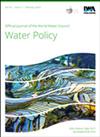水市场在加强美国西部水安全方面的作用?沃克河流域的经验教训
IF 1.8
4区 环境科学与生态学
Q4 WATER RESOURCES
引用次数: 1
摘要
在许多半干旱、白雪皑皑的河流系统中,气候变化正在改变流量的时间和数量,而用水优先顺序的变化对供水提出了额外的需求。这些动态对全球水资源安全构成挑战。水市场——用于通过自愿贸易重新分配水资源的经济工具——可以用来适应这些变化,尽管其实施仍然有限。为了了解水市场如何加强美国西部的水安全,我们在沃克河流域的经验背景下,广泛评估了不同参与者对水分配机构的看法,以及他们对不同水市场设计的偏好。这个4200平方英里的分水岭位于加利福尼亚-内华达州边界,体现了许多关键的区域水管理挑战。通过对30次深入访谈的分析,我们发现,各部门的行动者都希望改变传统的水资源分配机构,最好是在地方一级,并将市场视为一种可接受的重新分配工具。尽管已确定存在法律和社会挑战,但促进临时水交易的市场通常是首选。虽然仅限于单个流域的情况,但这些发现为设计水市场提供了经验教训,以加强区域内外流域的水安全。本文章由计算机程序翻译,如有差异,请以英文原文为准。
A role for water markets in enhancing water security in the western United States?: Lessons from the Walker River Basin
In many semi-arid, snow-fed river systems, climate change is shifting the timing and quantity of streamflow, while changing water use priorities introduce additional demands on water supplies. These dynamics challenge water security across the globe. Water markets – economic instruments used to reallocate water via voluntary trade – may be used to adapt to these changes, though their implementation remains limited. To understand how water markets may enhance water security in the western United States, we assess diverse actors’ perceptions of water allocation institutions broadly, as well as their preferences for different water market designs, in the empirical context of the Walker River Basin. This 4,200-square mile watershed, located on the California-Nevada border, exemplifies many key regional water management challenges. Through an analysis of 30 in-depth interviews, we find that actors across sectors desire changes to traditional water allocation institutions, preferably at the local level, and view markets as an acceptable tool for reallocation. Despite identified legal and social challenges, markets that facilitate temporary water trading are generally preferred. While limited to the context of a single basin, these findings provide lessons for designing water markets to enhance water security in basins regionally and beyond.
求助全文
通过发布文献求助,成功后即可免费获取论文全文。
去求助
来源期刊

Water Policy
环境科学-水资源
CiteScore
3.10
自引率
12.50%
发文量
81
审稿时长
6-12 weeks
期刊介绍:
Water Policy will publish reviews, research papers and progress reports in, among others, the following areas: financial, diplomatic, organizational, legal, administrative and research; organized by country, region or river basin. Water Policy also publishes reviews of books and grey literature.
 求助内容:
求助内容: 应助结果提醒方式:
应助结果提醒方式:


